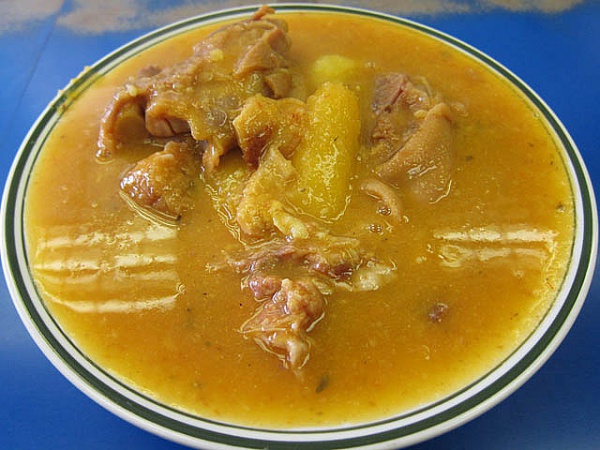Facts About Sopa de mondongo
Sopa de mondongo is a cherished traditional soup that features diced tripe slow-cooked with an array of vegetables and aromatic spices such as bell peppers, onions, carrots, cabbage, celery, tomatoes, cilantro, and garlic. This hearty dish is a staple in many former Spanish colonies across Latin America, the Caribbean, and even the Philippines.
Each region has its own unique take on sopa de mondongo. In Argentina, it is simply known as "mondongo." In Brazil, it may be referred to as "mondongo" or "mocotó" with variations like "dobradinha." In Colombia, sopa de mondongo is a common part of a traditional lunch, made with chicken or beef stock and brimming with cilantro, peas, carrots, and more.
In Panama, the dish is also called "mondongo" but is prepared more like a stew, incorporating ingredients such as onions, carrots, chickpeas, and chorizo, and is typically served with white rice. Puerto Rico’s version enhances the soup with chickpeas, potatoes, squash, malanga, fresh herbs, salted pork feet, and tail, along with root vegetables and fruits such as plantains and bananas, plus capers and olives for added flavor.
El Salvador’s variation, known as "sopa de pata" includes ripe bananas, cabbage, cassava, sesame and pumpkin seeds, carrots, potatoes, green chilies, udder, and cow’s feet. In Venezuela, mondongo is a rich, flavorful dish where tripe, locally called "panza" is often cooked with pig feet. Venezuelans might add a splash of lemon or tamarind for a refreshing tang and serve it with arepas or casabe. It is a popular meal enjoyed early in the day or after a night of festivities, and it is commonly found in areperas, which are restaurants specializing in arepas.

 Honduras
Honduras